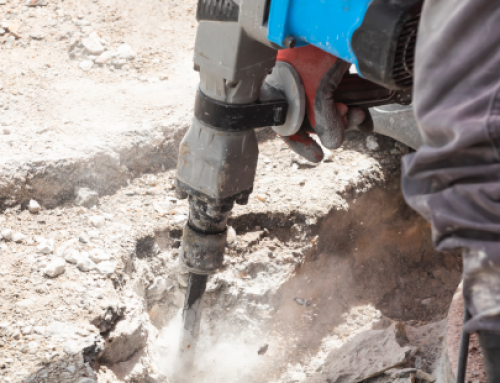Asphalt is a popular choice for parking lots, driveways, and roads because it is durable and affordable. But once it’s applied, exposure to water, UV rays, oil, and heavy traffic can cause the asphalt to fade, dry out, crumble, and crack over time.
Are you wondering if the damage on your asphalt pavement can be repaired?
Asphalt pavements have a long life span, but you must regularly clean and sealcoat them to protect them and ensure they continue functioning correctly. Without maintenance, signs of aging and deterioration begin to show on the surface of asphalt pavement. Constant exposure to the weather, sun, natural elements, and stress can cause flaking, brittleness, and damage to asphalt just like it does to our skin. It won’t be long before you notice cracks snaking across your parking lot or driveway. You may also spot uneven sections, fading and discoloration, ruts, and depressions.
Repairs can usually be made if you catch the damage early. They will also save you time and money and help you avoid removing the damaged pavement and replacing it with a new one.
Our experts recommend the following methods to repair your asphalt and give it new life!
5 Common Asphalt Repair Methods:
1. Sealcoating
Sealcoating is a protective coating that soaks into the asphalt and restores its shiny new appearance. It also replenishes the oils and binders that have dried up or broken down and fills in any small cracks or gaps. The sealcoat layer forms a protective barrier that prevents future damage caused by water, sun, and oil.
Benefits of Sealcoating include:
- Restores the deep glossy black color to faded and dingy asphalt. It not only improves the appearance of your property, but it also increases its value.
- Keeps the asphalt from becoming brittle and helps prevent it from crumbling and cracking.
- Prevents potholes from developing because cracks don’t have a chance to form.
- It’s cost-effective. When you invest in sealcoating every few years, you extend the life of your asphalt pavement and minimize the need for expensive repairs.
2. Crack Filling
Cracks are one of the most common problems in pavements, driveways, and parking lots. They usually occur after frequent use, and they’re often a sign that your pavement is getting old. The good news is cracks can easily be fixed – if you repair them soon! If you wait too long to fill them, they may deteriorate into alligator cracks or potholes. If this happens, it will damage the stability of your asphalt pavement and lead to expensive repairs or even replacement.
3. Patching
Potholes are another common issue in asphalt pavements. Heavy usage, negligence, and weather problems can cause potholes. If they’re not repaired quickly, they’ll continue to get bigger, causing even more damage. However, minor potholes can easily be fixed by filling the potholes. This process is known as patching. Cold mix asphalt is used to fill, or patch, the potholes in your pavements.
4. Overlay
Another repair method is asphalt overlay. Instead of completely tearing up an old and damaged asphalt surface, the overlay method uses the existing layers as a base for a new layer of asphalt. This method is recommended if you have severe damage like large cracks or potholes.
5. Milling
Asphalt milling is a different process that works best for parking lots and other large areas. Special equipment is needed to grind up the damaged layer of asphalt to provide an even and smooth surface for repaving. Asphalt milling is an affordable solution that is less expensive than complete demolition and repaving. It’s also eco-friendly because the ground-up asphalt can be recycled.
If you’ve noticed damage to your asphalt pavement, Premium Asphalt Paving & Sealcoating can help you! We’re a full-service asphalt paving company right here in the Bryan College Station area. Our experts are ready to handle any messy repair job you might have. Contact us today to make an appointment for a FREE consultation and estimate.








